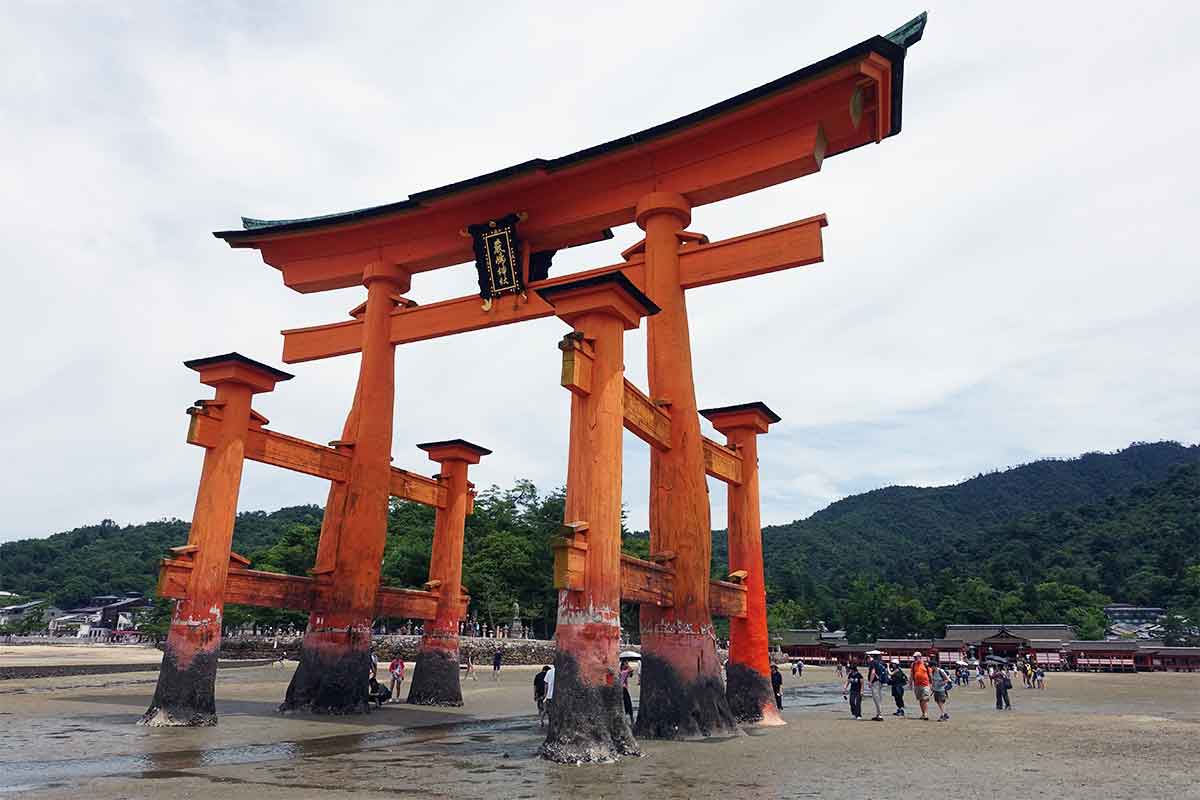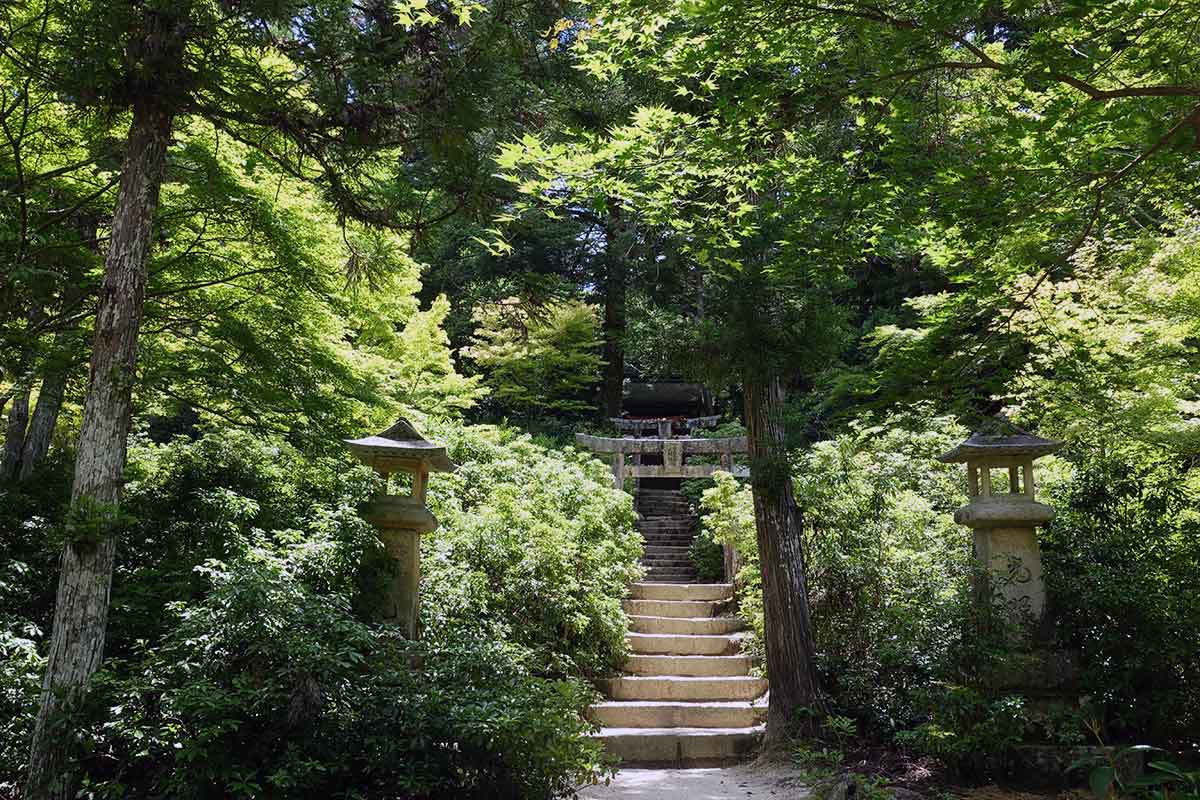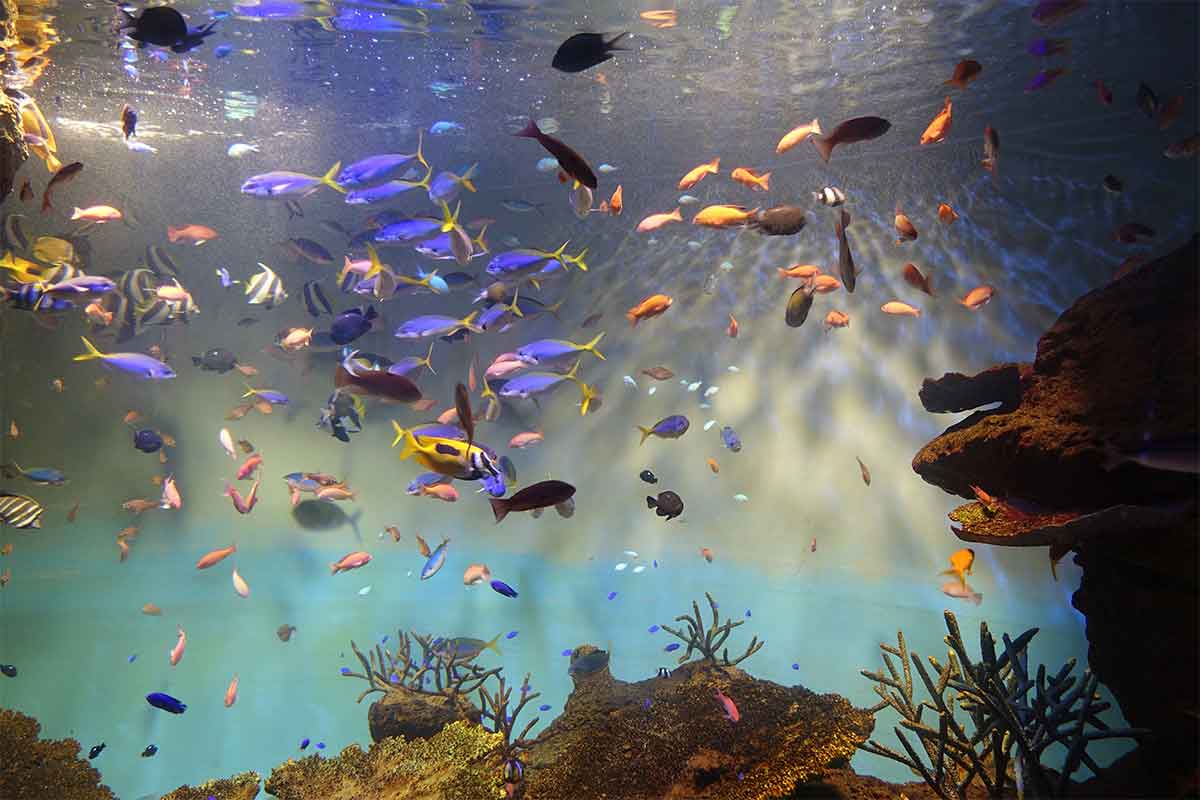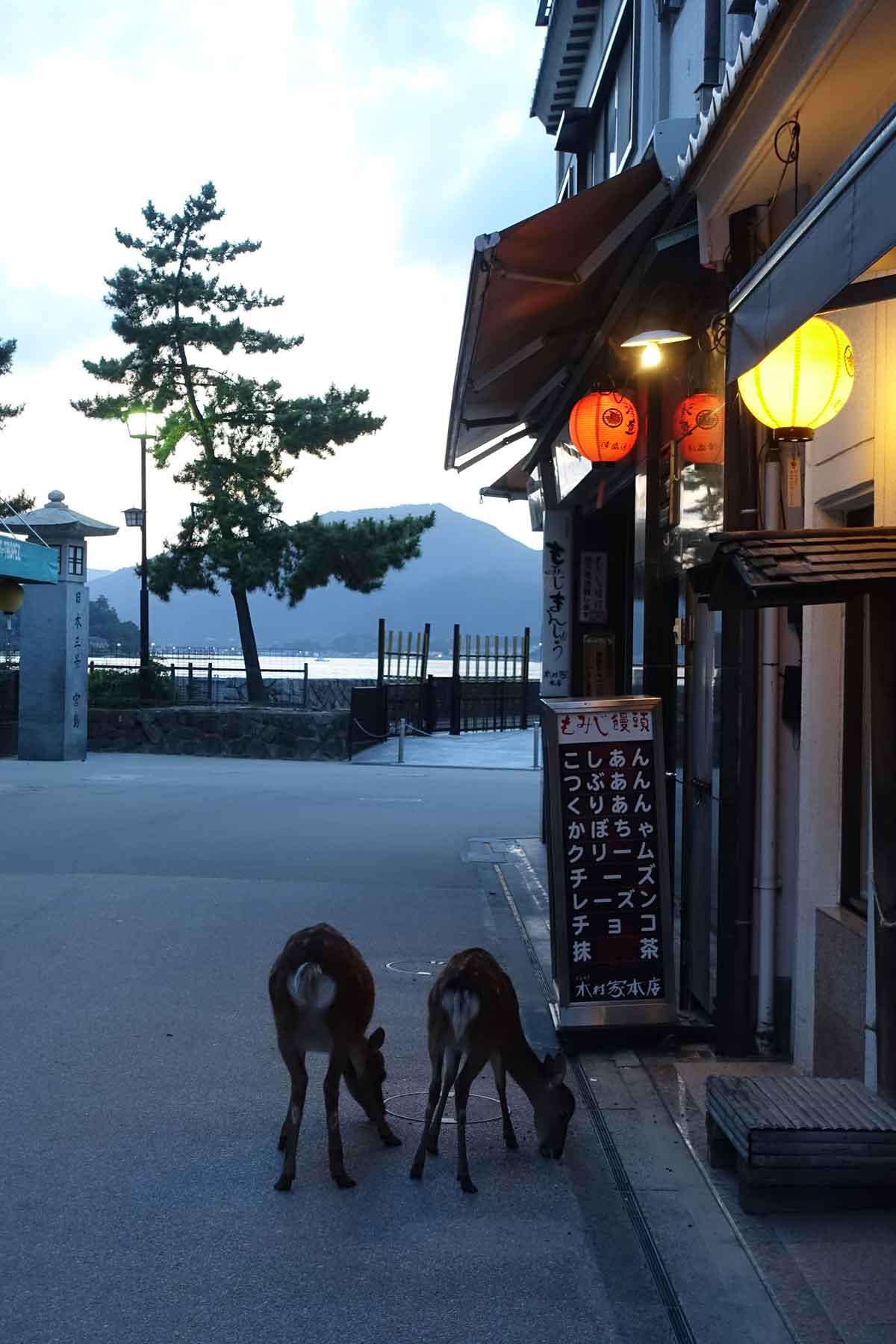Insel Miyajima in Japan, die Insel der Götter
Veröffentlicht am 17. Dezember 2024
Als einer der schönsten Orte des japanischen Archipels gilt die Insel Itsukushima oder Miyajima in Japan als ein eigenständiges Shinto-Heiligtum. Natur, Kultur und Tradition verschmelzen auf dieser kleinen Insel, die nicht weit von Hiroshima am Seto-Binnenmeer liegt. Weltweit bekannt ist ihr Torii im Wasser, das erste Symbol, das Besucher vom Fährschiff aus sehen, wenn sie auf der Insel ankommen. Wir erklären Ihnen, warum dies wirklich ein Muss bei einer Reise nach Japan ist.
Itsukushima-Schrein, UNESCO-Weltkulturerbe
Die Geschichte berichtet, dass Shunsai Hayashi, ein konfuzianischer Gelehrter, 1643 schrieb, dass Miyajima zu den 3 schönsten Orten Japans gehört, zusammen mit Matsushima und Amanohashidate! Seitdem verfolgt die Legende diesen Ort.
1995 von der UNESCO ausgezeichnet, erhielt ein ganzer Teil der Insel diese Auszeichnung: der Shinto-Tempel Itsukushima, die Uferpromenade mit ihrem berühmten roten Torii und auch der Berg Misen.
Itsukushima-Schrein, schwimmendes Heiligtum
Der Tempel wurde von Taira No Kiyomori erbaut, dessen Statue Sie an der Uferpromenade bewundern können. Seine Geschichte reicht über 1.400 Jahre zurück und er ist ein wahres Beispiel für einzigartiges architektonisches Design, Symbol für die Kultur, Geschichte und den Geist Japans.
Das Torii:
Das Symbol von Miyajima ist so berühmt, dass man es überall auf Illustrationen Japans sieht. Bei Ebbe ist es zu Fuß zugänglich, Sie können darunter hindurchgehen. Am Ende des Tages kehrt das Meer zurück und die Touristen kommen, um das Schauspiel des beleuchteten Torii vom Ufer aus zu bewundern. Es ist das Symbol der Grenze zwischen der profanen und der heiligen Welt. Es markiert den Eingang zum Itsukushima-Schrein, der auf Stelzen gebaut ist.

Die Pagode:
Erbaut im Jahr 1407 und 28 Meter hoch, vereint sie japanische und chinesische Architekturstile. Sie befindet sich neben dem Senjoukaku, dem größten Bauwerk von Miyajima, mit Blick auf den Itsukushima-Schrein.
Siehe diesen Beitrag auf Instagram
Ein Beitrag geteilt von Asato (@asato10jp) am 2. Nov. 2018 um 1:29 PDT
Bedeckt von üppigen, unberührten Wäldern erhebt sich der Berg Misen, der höchste Berg der Insel Miyajima, 535 Meter über dem Meeresspiegel. Der Berg gilt als heilig und wird seit der Antike verehrt. In der Nähe des Gipfels befinden sich Tempel, die mit Kobo Daishi, einem großen buddhistischen Priester, verbunden sind. Es gibt auch Felsen mit ungewöhnlichen Formen und eine Aussichtsplattform. Eine Seilbahn verbindet die Shishilwa-Station auf dem Berg Misen mit dem Momijidani-Park. Für Sportliche sind drei Wanderwege zugänglich, um den Gipfel zu erreichen (rechnen Sie mit etwa 1,5 bis 2,5 Stunden).
Oben angekommen, ist die Aussicht herrlich. Spazieren Sie zwischen den zahlreichen Tempeln, insbesondere der Reikado Hall, in der seit 1.200 Jahren eine Flamme brennt, die von Kobo Daishi entzündet wurde. Mit dieser Flamme wurde auch das Friedensfeuer in Hiroshima entzündet. Gleich daneben entdecken Sie die Jizos, Statuen von Kindergöttern. Es heißt, dass alle Wünsche bezüglich Kinder erfüllt werden, wenn man Wasser über die Statuen gießt und dabei ein Gebet spricht.
Daisho-in
Daishoin ist nicht so bekannt wie der Itsukushima-Schrein. Dennoch hat er viele sehenswerte Merkmale, insbesondere seine 500 Buddha-Statuen und seine 600 Sutra-Bände.
Er befindet sich am Fuße des dichten Waldes von Misen und ist einer der berühmtesten Tempel von Miyajima.
Siehe diesen Beitrag auf Instagram
Ein Beitrag geteilt von Simon Bowden (@sj_bowden) am 21. Sept. 2018 um 3:09 PDT
Weitere Sehenswürdigkeiten in Miyajima
Die Machiya-Straße
Abgesehen von den Tempeln und der Natur sollten Sie unbedingt durch die kleine Stadt schlendern. Während die Omotesando-Straße das ganze Jahr über voller Touristen ist, gibt Ihnen die Machiya-Straße, die einen Block von Omotesando entfernt liegt, einen Einblick in das lokale Leben von Miyajima mit ihrer Reihe von jahrhundertealten Häusern, die eine ästhetische Kombination historischer Architektur bieten.
Bei Ihrem Spaziergang durch die Straßen der Stadt sollten Sie die berühmten, mit roter Bohnenpaste gefüllten Ahornblattkuchen, die Momiji Manju, probieren.
Der Momijidani-Park
Am Fuße des Berges Misen finden Sie den Momijidani-Park, der im Herbst wunderschön ist, wenn die Ahornblätter ihre scharlachrote Farbe annehmen. Aber keine Sorge, alle vier Jahreszeiten bieten ebenfalls schöne Farben.

Der Strand und das Aquarium
Wenn Sie mit Kindern nach Japan reisen, können Sie Ihrem Aufenthalt in Miyajima einen Nachmittag am Strand, im Aquarium oder im Handwerkszentrum hinzufügen; Aktivitäten, die die Jüngsten begeistern werden.
Der Strand liegt 10 Minuten mit dem Shuttle vom Fährterminal oder 40 Minuten zu Fuß entfernt. Ein schöner weißer Sandstrand erwartet Sie neben dem Tsutsumigaura-Park. Der Strand ist zum Schwimmen und für Wasserspiele ausgestattet.
Das Aquarium von Miyajima ist, wie viele Aquarien in Japan, sehr lehrreich und unterhaltsam. Jede Stunde finden Animationen statt und Ihre Kinder können Pinguine streicheln, Seelöwen füttern oder sogar „seltsame“ Meereskreaturen berühren.

Das Handwerkszentrum wird auch die Jüngsten begeistern. Es präsentiert die verschiedenen handwerklichen Traditionen der Insel und führt Feinschmecker in die Herstellung von Momiji Manju oder Reisspateln ein.
Die Hirsche sind Teil des Charmes der Insel, Sie werden ihnen überall begegnen. Sie sind viel weniger aggressiv als die von Nara, bleiben aber dennoch Wildtiere. Achten Sie auf Ihre persönlichen Gegenstände, Tickets oder Karten, sie lieben sie. Aber sie lassen sich leicht für ein Erinnerungsfoto ansprechen.
Warum sollte man auf der Insel Miyajima in Japan übernachten?
Geschichte, Tradition, blaues Meer, Berge und Grün... So viele Pluspunkte, die es wert sind, in die Kultur des Landes einzutauchen. Sich bei einer Reise nach Japan Zeit zu nehmen, ist manchmal das Beste, was man tun kann. Und wenn die Zeit es zulässt, sollte man sich gerade hier, in Itsukushima, etwas länger aufhalten als anderswo.
Am Ende des Tages, wenn die letzte Fähre in Richtung Miyajimaguchi zurückkehrt, ist die Insel leer und wird dann zu einem kleinen, vom Rest der Welt isolierten Paradies. Die Laternen werden angezündet und das schwimmende Torii ist beleuchtet. Nach einem typischen Abendessen in Ihrem Ryokan oder in den Restaurants der Stadt (Achtung, sie schließen sehr früh!) schlendern Sie im Yukata am Strand entlang.

Wann sollte man Miyajima besuchen?
Das ganze Jahr über prägen Veranstaltungen das Leben der Insel. Von Januar bis Dezember gibt es immer ein Festival zu entdecken. Die Insel ist so magisch, dass es schwer wäre, eine ideale Zeit für Ihren Aufenthalt in Japan zu wählen. Oder vielmehr, man sollte zu jeder Jahreszeit kommen!
Im Frühling nach Miyajima reisen
Das ist wahrscheinlich die beliebteste Zeit für Besucher, um nach Japan zu reisen, die Zeit der Sakura, der blühenden Kirschbäume! Im März findet in Miyajima das Kiyomori-Festival (24. März 2019) statt. Alle, Kinder und Erwachsene, ziehen in traditionellen Kostümen durch die Straßen. Dieses Fest ist zu Ehren von Taira Kiyomori. Weitere Festivals finden im Frühling statt, informieren Sie sich auf der offiziellen Website von Miyajima.
Eine Reise im Sommer
Im Sommer ist es in Japan sehr heiß. Auch wenn alles klimatisiert ist, befinden sich die Sehenswürdigkeiten der Insel Miyajima im Freien, also nehmen Sie einen Hut und eine Trinkflasche mit! Das drittgrößte Shinto-Ritual auf einem Boot in Japan findet Ende Juli oder Anfang August in Miyajima statt. Es ist das Kangensai-Festival, ein Musikfestival, bei dem Sie das Feuerwerk auf dem Wasser bewundern können.
Miyajima im Herbst
Der Herbst ist vielleicht die schönste Zeit, um nach Japan zu reisen. Das Klima ist noch mild und die Blätter der Bäume leuchten, die Ahornbäume werden rot. Im Herbst findet in Miyajima das Kikka-sai-Festival (oder Chrysanthemenfest) statt. Tanz- und Musikvorführungen aus Kyoto finden im Itsukushima-Schrein statt.
Der Winter in Japan
Im Januar findet das Momote Sai statt, eine Shinto-Zeremonie des Bogenschießens. Das nächste findet am 20. Januar 2019 statt. Bei dieser Zeremonie werden 200 Pfeile abgeschossen. Im Omoto-Schrein wird ein Shinto-Gebet gesprochen, dann werden den Gottheiten Opfergaben (Essen und Trinken) dargebracht.
Eine Website von
Passen Sie Ihre Reisen mit Quotatrip an und erhalten Sie maßgeschneiderte Angebote direkt in Ihr Postfach.